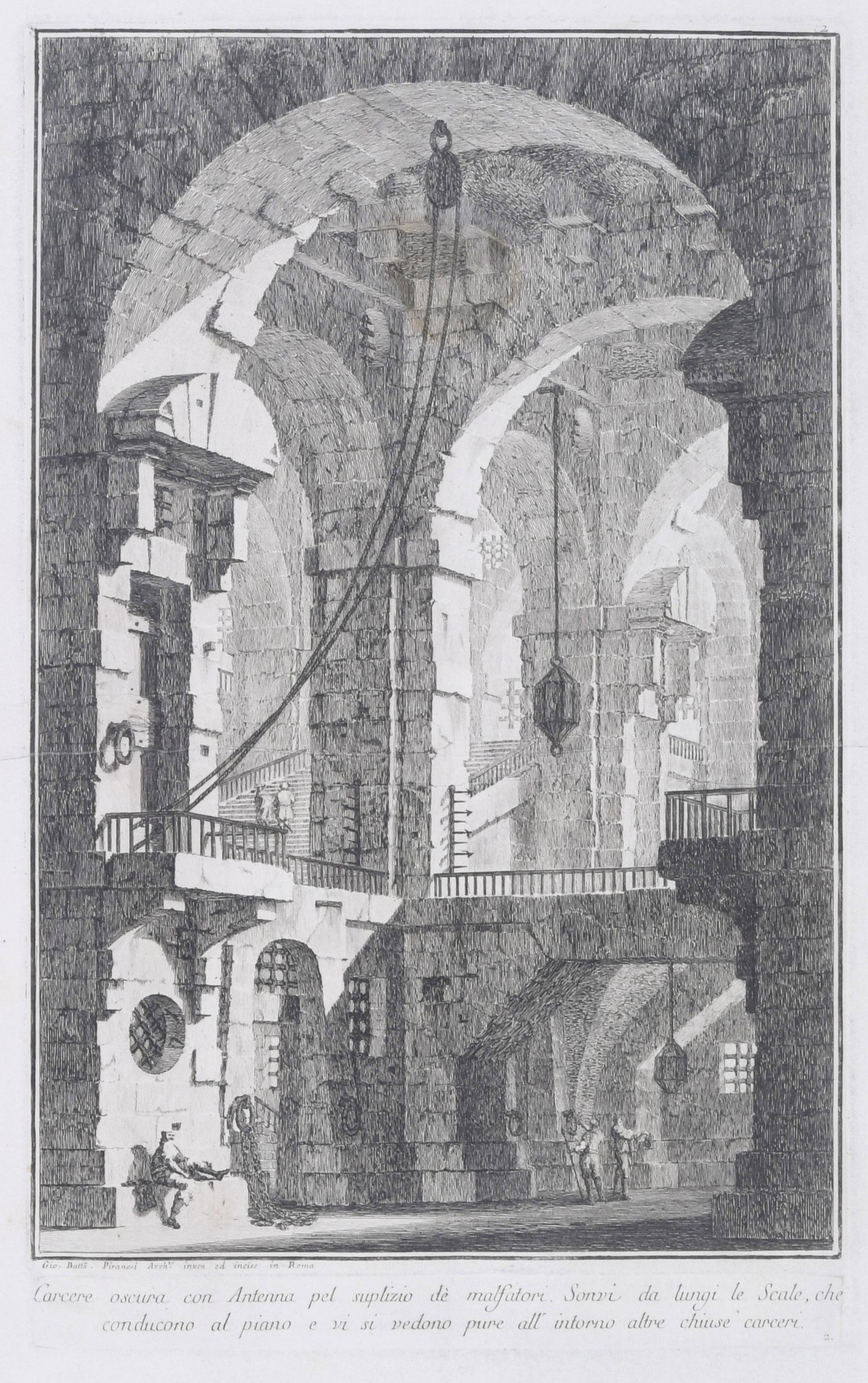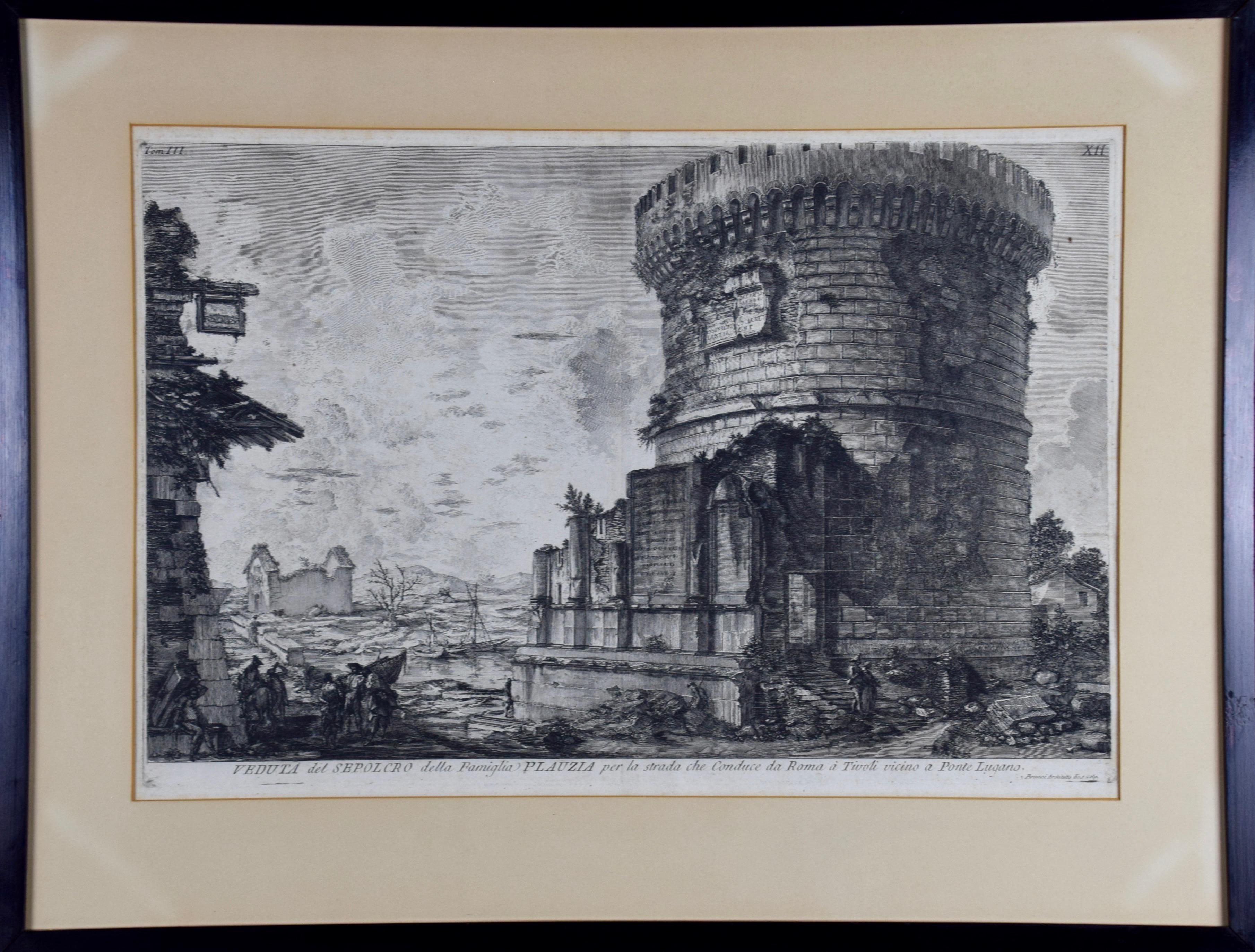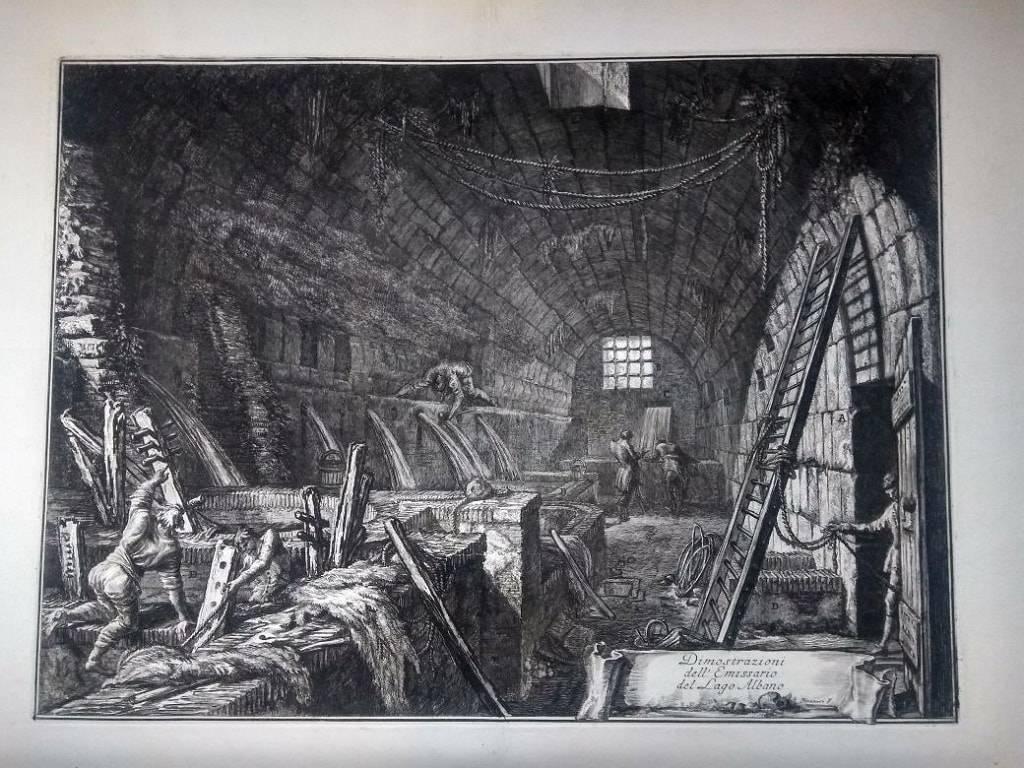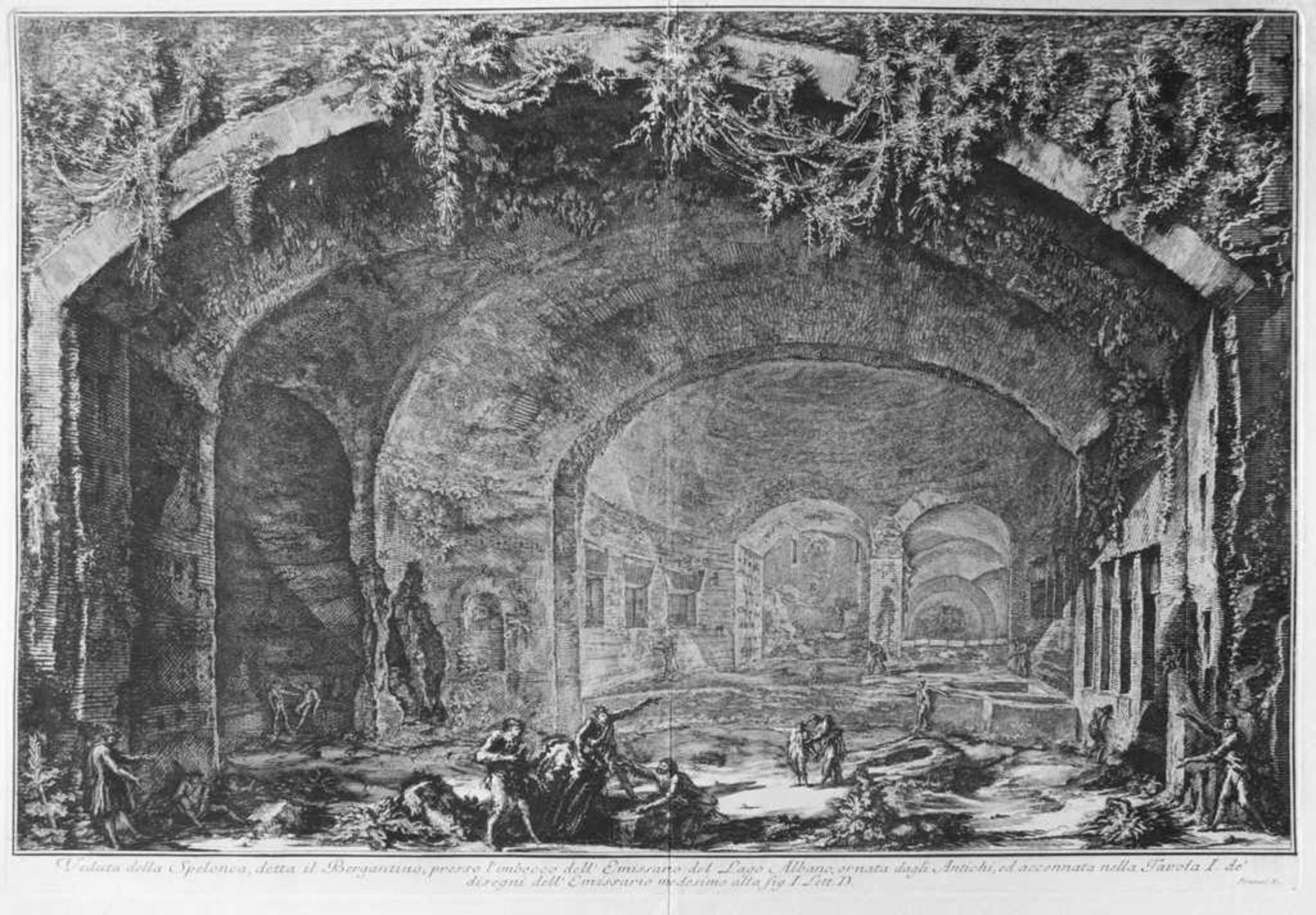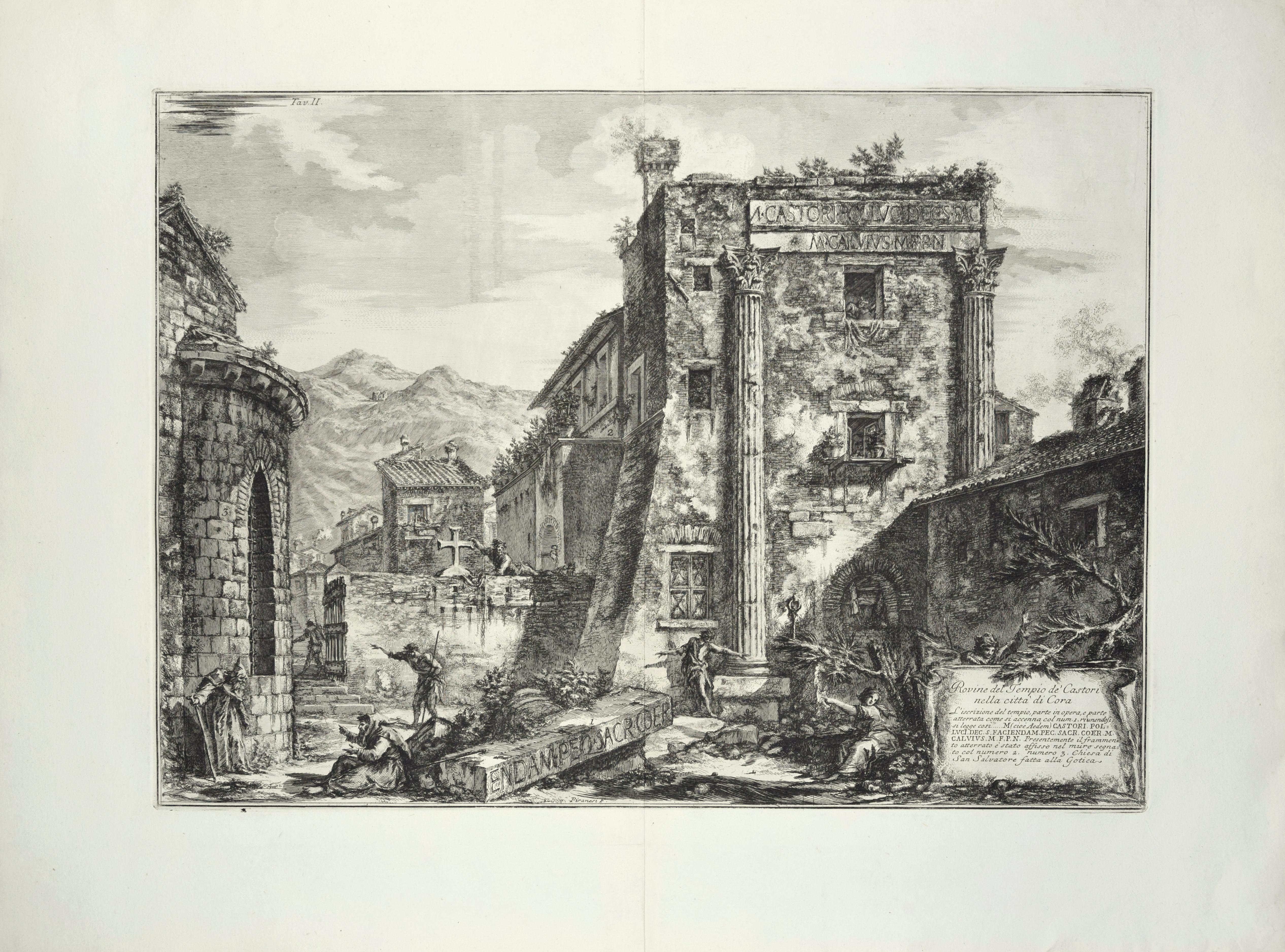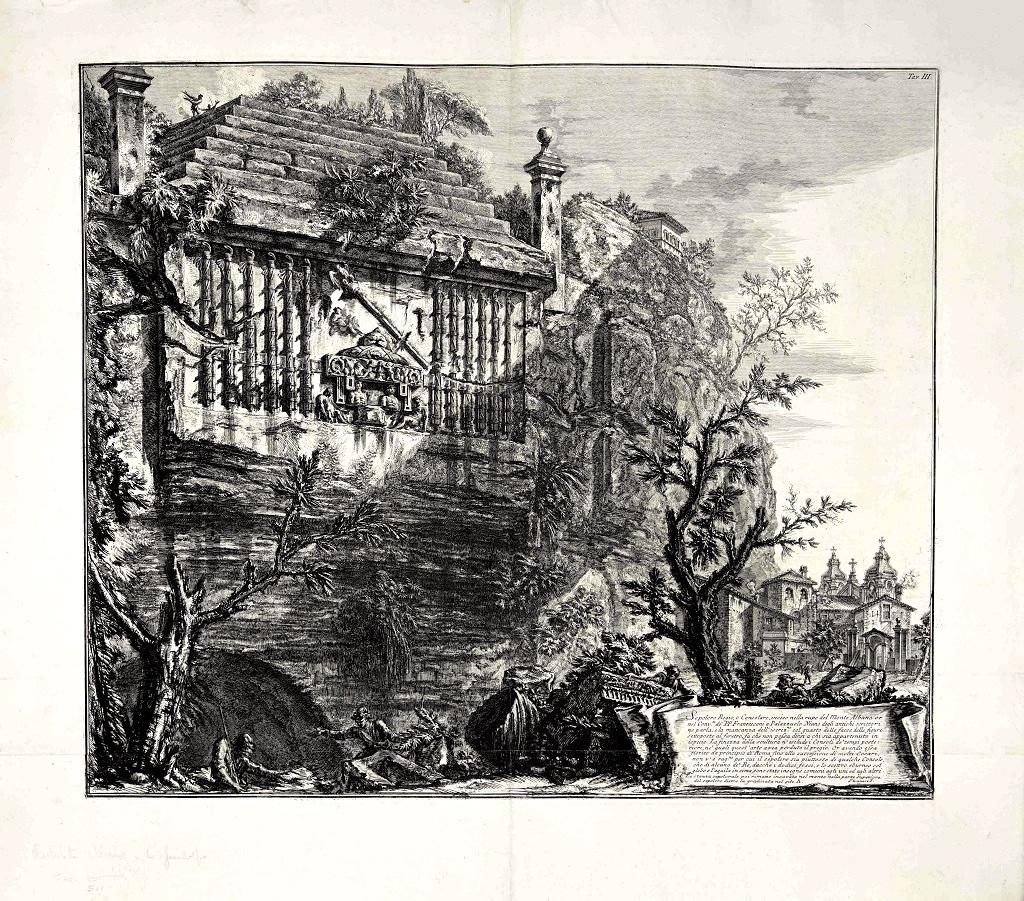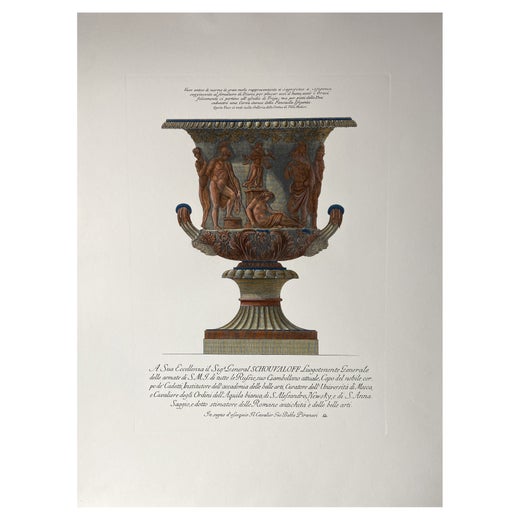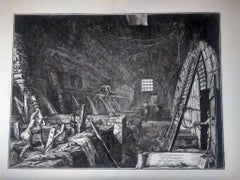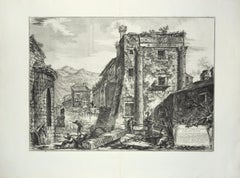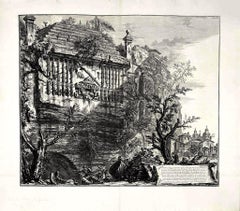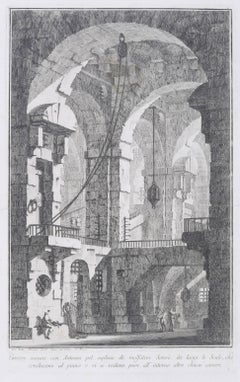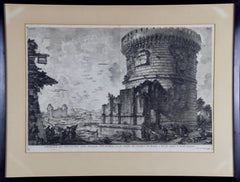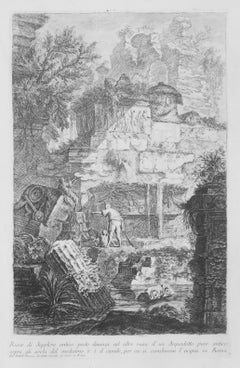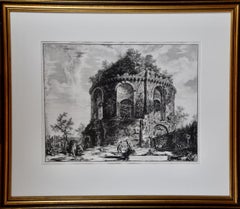Items Similar to The Well, Carcere XIII - Etching by G.B.Piranesi - 1750s
Want more images or videos?
Request additional images or videos from the seller
1 of 5
Giovanni Battista PiranesiThe Well, Carcere XIII - Etching by G.B.Piranesi - 1750s1750s
1750s
$26,817.85
£19,898.98
€22,400
CA$37,455.14
A$40,620.99
CHF 21,335.69
MX$493,413.50
NOK 266,982.38
SEK 251,378.82
DKK 170,576.11
About the Item
Giovanni Battista Piranesi, The Well, Carcere XIII , from “ Images of Prisons”, Buchard , Rome, 1749-50
Etching on laid paper. Signed on plate “ Piranesi F.” lower-right. Very good condition, except a normal central fold and some burnishings beyond the margin line.
Image Dimensions: cm 40 x 54.5. Dim: cm 48.8x 54.5
Wonderful etching, thirteenth plate from “ Fanciful Images of Prisons, etchings published by Giovani Buzard in Rome, conducting business on the Corso ”.
Very Precious and Rare Specimen of First State/III.
Image of Prisons, better known as “ Carceri d’invenzione ”is a masterpiece in composition of space, that will influence the future generation of Romantics, Surrealists and artists like Escher.
Ref : Hind 13; Robinon 39; L. Ficacci, Piranesi, The complete Etchings, Taschen, pag.149, fig.n. 122;
- Creator:Giovanni Battista Piranesi (1720-1778, Italian)
- Creation Year:1750s
- Dimensions:Height: 15.75 in (40 cm)Width: 21.46 in (54.5 cm)Depth: 0.04 in (1 mm)
- Medium:
- Movement & Style:
- Period:1750-1759
- Framing:Framing Options Available
- Condition:Insurance may be requested by customers as additional service, contact us for more information.
- Gallery Location:Roma, IT
- Reference Number:Seller: M-947661stDibs: LU650310834762
Giovanni Battista Piranesi
Piranesi was born in Venice in 1720 and died in Rome in 1778. He was the son of a stone mason and was trained as an architect. After a slow start he eventually achieved great success as an architect, archaeologist, artist, designer, collector, and antiquities dealer. His mission was to glorify the architecture of ancient Rome through his engravings and etchings. His highly dramatized prints often depict imaginary interiors and frequently include figures in mysterious activities, who are dwarfed by the magnitude of their monumental surroundings. Piranesi's style greatly influenced the neoclassical art movement of the late 18th century. His dramatic scenes inspired generations of set designers, as well as artists, architects and writers. His prints have continued to increase in value to institutions and collectors.
About the Seller
4.9
Platinum Seller
Premium sellers with a 4.7+ rating and 24-hour response times
1stDibs seller since 2017
7,734 sales on 1stDibs
Typical response time: 2 hours
- ShippingRetrieving quote...Shipping from: Grasse, France
- Return Policy
Authenticity Guarantee
In the unlikely event there’s an issue with an item’s authenticity, contact us within 1 year for a full refund. DetailsMoney-Back Guarantee
If your item is not as described, is damaged in transit, or does not arrive, contact us within 7 days for a full refund. Details24-Hour Cancellation
You have a 24-hour grace period in which to reconsider your purchase, with no questions asked.Vetted Professional Sellers
Our world-class sellers must adhere to strict standards for service and quality, maintaining the integrity of our listings.Price-Match Guarantee
If you find that a seller listed the same item for a lower price elsewhere, we’ll match it.Trusted Global Delivery
Our best-in-class carrier network provides specialized shipping options worldwide, including custom delivery.More From This Seller
View AllDimostrazioni dell'Emissario del Lago Albano - Original Etching by G.B. Piranesi
By Giovanni Battista Piranesi
Located in Roma, IT
G.B. Piranesi, Dimostrazioni dell’Emissario del Lago Albano, Illustrations of the Emissarium of Lake Albano
Etching, Drypoint, Burin on laid paper. Signed on...
Category
18th Century Landscape Prints
Materials
Drypoint
Veduta della Spelonca, detta il Bergantino - Etching by G. B. Piranesi - 1762
By Giovanni Battista Piranesi
Located in Roma, IT
Veduta della Spelonca, detta il Bergantino is an original etching realized by G. B. Piranesi in 1762.
Image Dimensions: 43 x 63 cm
Very good condition.
Ref. Ficacci., p.442
Category
1760s Landscape Prints
Materials
Etching
Rovine del Tempio de' Castori nella città di Cora - Etching by G. B. Piranesi
By Giovanni Battista Piranesi
Located in Roma, IT
Image dimensions 40.6x56.8.
Belongs to the Collection "Antiquities of Cori, described and etched by Giovambat Piranesi", and printed in 1764.
Beautiful first roman edition/1st state ...
Category
1760s Landscape Prints
Materials
Etching
Sepolcro Regio, o Consolare , inciso nella rupe... - G. B. Piranesi - 1764
By Giovanni Battista Piranesi
Located in Roma, IT
Sepolcro Regio, o Consolare , inciso nella rupe del Monte Albano (Royal or Consular Tomb in the Alban Hills) is an original etching realized by Giovan Battista Piranesi in 1764.
Ed...
Category
1760s Figurative Prints
Materials
Etching
View of Castello dell'Acqua Felice - Etching by G. B. Piranesi - 1751
By Giovanni Battista Piranesi
Located in Roma, IT
View of Castel of Acqua Felice is an original etching realized by the italian artist Giovanni Battista Piranesi in 1751.
Very precoius and rare lifetime impression. Roman edition. I...
Category
1750s Old Masters Figurative Prints
Materials
Etching
View of Mausoleo of Cecilia Metella - Etching by G. B. Piranesi - 1773
By Giovanni Battista Piranesi
Located in Roma, IT
View of Mausoleo of Cecilia Metella is an original etching realized by the italian artist Giovanni Battista Piranesi in 1773.
Precoius roman edition. Complete title on the lower ma...
Category
1770s Old Masters Figurative Prints
Materials
Etching
You May Also Like
Carcere ascura
By Giovanni Battista Piranesi
Located in Fairlawn, OH
Carcere ascura
Etching, 1743
Signed in the plate bottom left corner
From: Prima Parte, 1743
Second edition: 1750-1778
Watermark: R 37-39
A lifetime impression printed during Piranesi’s life, before the plates are moved to Paris by his sons in the 1790’s
This image foretells Piranesi's famous set, Carceri (Prisons) which is his next creative effort.
Condition: Horizontal crease midway in the sheet associated with the manufacture of the paper.
Visible watermark verso
Small printer crease in the bottom right below the caption plate.
Image size: 14 1/2 x 9 1/2 inches
Reference: Robison 3 iii/VI
Piranesi In Rome: Prima Parte di Architetture e Prospettive
"Although Piranesi studied architecture in Venice, he never was able to find work in the field other than a few jobs involving remodeling in Rome. While Piranesi was struggling to support his architectural endeavors upon his arrival in Rome in 1740, he spent a short period of time in the studio of master painter Giovanni Battista Tiepolo (1696-1770) in addition to his apprenticeship with Giuseppe Vasi. The first production of Piranesi’s early years in Rome and a culmination of his training under Vasi, Tiepolo, and his uncle, was the Prima Parte di Architetture e Prospettive (1743). The Prima Parte was a collection of twelve etchings of imaginary temples, palaces, ruins, and a prison. During this time, Piranesi was still developing the unique style of etching he is known for today, and as such the Prima Parte differs significantly in technique compared to later works. In the Frontispiece of the Prima Parte, Piranesi’s lines are definite and exact with very little flow to them, designed in the form of traditional etching. The detail is immaculate, and yet perspective of the piece is oddly simple and familiar to the viewer. Piranesi’s technique employs miniscule markings and lines, intricately woven together to create a stippling effect. The Prima Parte, described as “rigid” by art historian Jonathan Scott, came to be seen as a stark contrast to his later sketches, which were much lighter and freer. Influenced by the style of Tiepolo, which epitomized the lightness and brightness of the Rococo period, Piranesi adopted some of the more painterly techniques of the masters he apprenticed under. Piranesi made the medium of etching appear as though it was a sketch or a painting, hence a “freer” and more fluid design in his later works. For example, the frontispiece of the Prima Parte read as an etching to Piranesi’s audience, but in his later vedute, the style of etching almost appears to be made of brushstrokes. Moreover, at the same time Piranesi was working on the Prima Parte, he aided the artist Giambattista Nolli. There is a small section of Nolli’s map...
Category
1740s Old Masters Interior Prints
Materials
Etching
Ancient Roman Architecture: Original Framed 18th C. Etching by G. Piranesi
By Giovanni Battista Piranesi
Located in Alamo, CA
"Veduta del Sepolcro della Famiglia Plauzia per la Strada Che Conduce da Roma a Tivoli vicino a Ponte Lugano" from "Le Antichità Romane" (Roman Antiquities), one of the most famous works by Piranesi. "Antichita" illustrates the tombs along the Appian Way...
Category
Early 18th Century Old Masters Figurative Prints
Materials
Etching, Engraving, Drypoint
Ruine di Sepolcro antico
By Giovanni Battista Piranesi
Located in Fairlawn, OH
Ruine di Sepolcro antico
Etching, 1743
Signed in the plate bottomleft in the caaption plate
From: Prima Parte, 1743
Second edition: 1750-1778
Watermark: R 37-39
A lifetime impression printed during Piranesi’s life, before the plates are moved to Paris by his sons in the 1790’s
Coniditon: Excellent/Very good
Image size: 14 5/8 x 9 3/4 inches
Reference: Robison 17 iii/V
Piranesi In Rome: Prima Parte di Architetture e Prospettive
"Although Piranesi studied architecture in Venice, he never was able to find work in the field other than a few jobs involving remodeling in Rome. While Piranesi was struggling to support his architectural endeavors upon his arrival in Rome in 1740, he spent a short period of time in the studio of master painter Giovanni Battista Tiepolo (1696-1770) in addition to his apprenticeship with Giuseppe Vasi. The first production of Piranesi’s early years in Rome and a culmination of his training under Vasi, Tiepolo, and his uncle, was the Prima Parte di Architetture e Prospettive (1743). The Prima Parte was a collection of twelve etchings of imaginary temples, palaces, ruins, and a prison. During this time, Piranesi was still developing the unique style of etching he is known for today, and as such the Prima Parte differs significantly in technique compared to later works. In the Frontispiece of the Prima Parte, Piranesi’s lines are definite and exact with very little flow to them, designed in the form of traditional etching. The detail is immaculate, and yet perspective of the piece is oddly simple and familiar to the viewer. Piranesi’s technique employs miniscule markings and lines, intricately woven together to create a stippling effect. The Prima Parte, described as “rigid” by art historian Jonathan Scott, came to be seen as a stark contrast to his later sketches, which were much lighter and freer. Influenced by the style of Tiepolo, which epitomized the lightness and brightness of the Rococo period, Piranesi adopted some of the more painterly techniques of the masters he apprenticed under. Piranesi made the medium of etching appear as though it was a sketch or a painting, hence a “freer” and more fluid design in his later works. For example, the frontispiece of the Prima Parte read as an etching to Piranesi’s audience, but in his later vedute, the style of etching almost appears to be made of brushstrokes. Moreover, at the same time Piranesi was working on the Prima Parte, he aided the artist Giambattista Nolli. There is a small section of Nolli’s map...
Category
1740s Old Masters Interior Prints
Materials
Etching
Ancient Roman Temple Architecture: An 18th Century Framed Etching by Piranesi
By Giovanni Battista Piranesi
Located in Alamo, CA
This is an 18th century etching by Giovanni Battista Piranesi entitled "Veduta del Tempio detto della Tosse su la Via Tiburtina, un miglio vicino a Tivoli" (View of the so-called Tem...
Category
1760s Old Masters Figurative Prints
Materials
Etching
Veduta delle Antiche Sostruzioni, Vintage Cityscape Etching by Giovanni Piranesi
By Giovanni Battista Piranesi
Located in Long Island City, NY
Artist: Giovanni Battista Piranesi, Italian (1720 - 1788)
Title: Veduta delle Antiche Sostruzioni
Portfolio: Vedute di Roma
Year: 1776
Medium: Etching
...
Category
1770s Old Masters Landscape Prints
Materials
Etching
VEDUTA DEGLI AVANZI De’MAUSOLEI E DELLE FABBRICHE…...
By Giovanni Battista Piranesi
Located in Santa Monica, CA
GIOVANNI BATTISTA PIRANESI (Italian 1720-1778)
VEDUTA DEGLI AVANZI De’MAUSOLEI E DELLE FABBRICHE…c 1756 (Hind 83; Focillon 20.A.293; Giesecke 116; Wilton-E...
Category
1750s Old Masters Landscape Prints
Materials
Etching
$2,000 Sale Price
20% Off
More Ways To Browse
Antique 1750s
Banksy Monkey
Roy Lichtenstein Mirror
Chez Panisse
Jason Alexander Art
Rome Architecture Prints
Used Manhole Covers
Chez Panisse Poster
Gross Domestic Product Banksy
Alex Katz Woods
Beast Interiors
Leon Gaspard
Alma Jones
Blues Vintage Guitars
David Hockney Chair
Grammar Of Ornament
Owen Jones Grammar Of Ornament
Sean Mellyn
